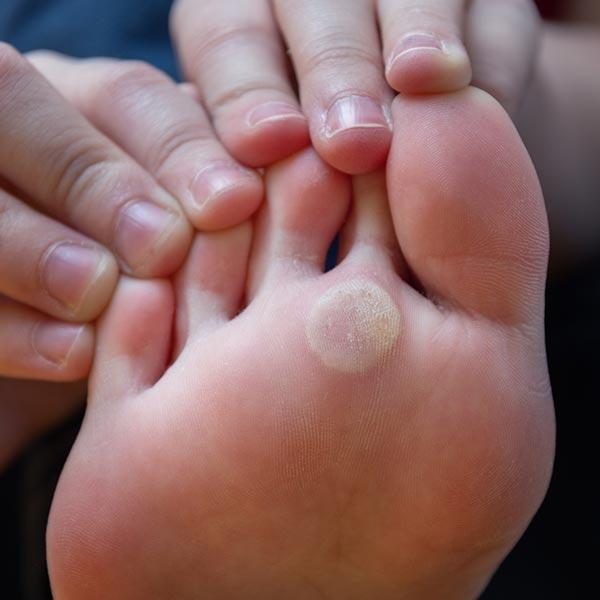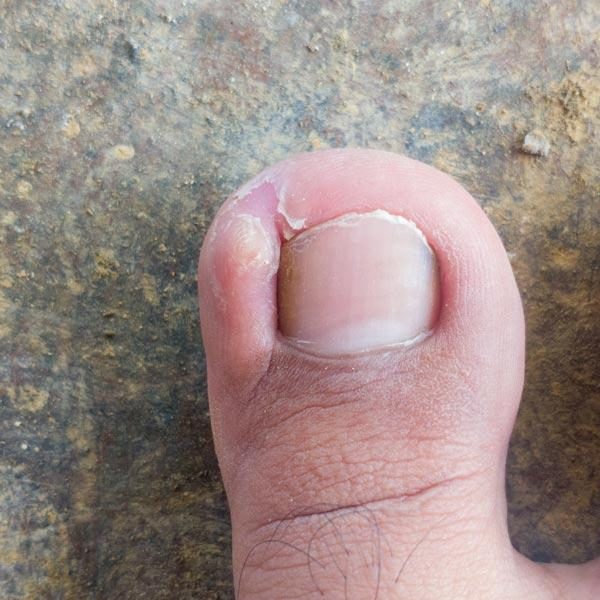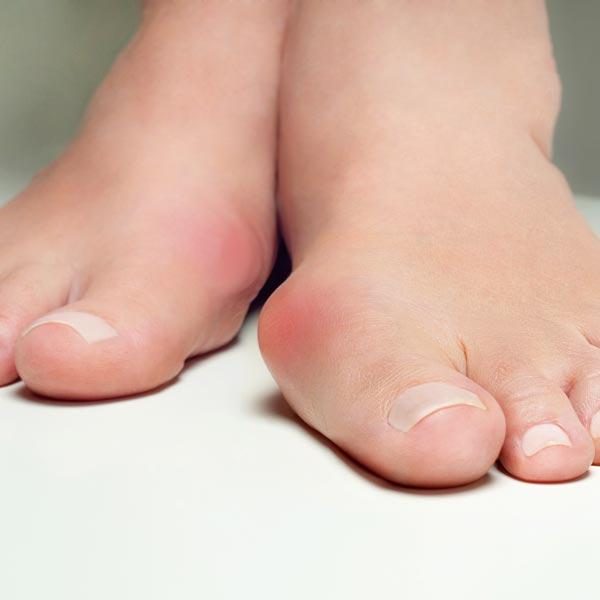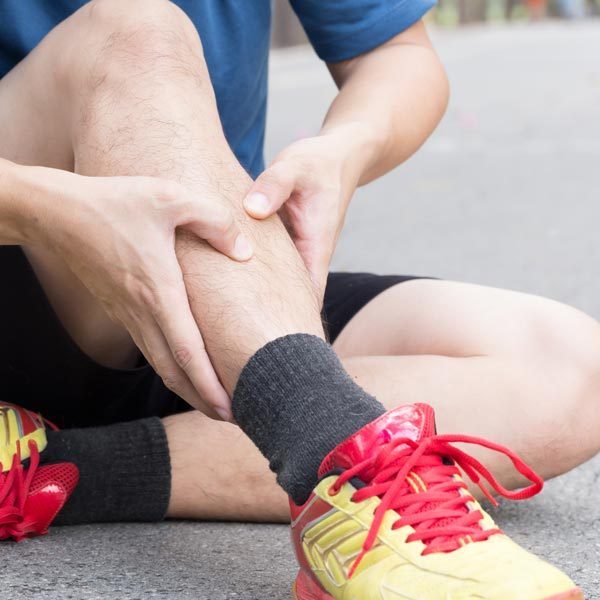Angela Tsimiklis
Adelaide Professional Podiatry
Angela has been with Medical HQ for over 10 years and consults at:
- Athelstone alternate Mondays, Wednesday & Thursday afternoon.
- Glynde alternate Mondays, Tuesday & Thursday morning
At Adelaide Professional Podiatry we offer over 20 years of podiatry experience treating a wide range of foot and lower limb conditions and treatments for all age groups.
You will receive the highest service and standard of podiatry care, with the latest and up to date techniques. We can ensure that every patient is given adequate education and information to fully understand their condition.
Your feet can affect the alignment of the rest of your body causing pain in the knees, legs, hips and back. We provide a complete range of podiatrist services with state of the art equipment and the latest innovative techniques to diagnose and treat your symptoms. We will liaise with all practitioners that may be involved in your treatment and your long term care requirements are important to us.
Common conditions
At Adelaide Professional Podiatry we specialize in feet and offer expert care for various foot conditions.
Most foot problems can be simply treated to reduce your discomfort before it ends up compromising your quality of life.

Corns and Callus
- Callus is a build up of dead skin, usually found on the soles of people’s feet.
- Corns are also made up of dead skin but tend to form on bony prominences. They form a well circumscribed lesion and tend to grow inwards towards the skin.
- Corns and calluses are caused by ill-fitting shoes or incorrect foot alignment during walking.
Cracked Heels
- A very common cause for foot pain, especially in summer when people wear open shoes or walk barefoot.
- Due to dry skin, where the skin loses its elasticity and will split.
- The skin can bleed and become infected.
Plantar Warts
- Plantar warts are well circumscribed lesions that occur on the soles of the feet.
- They appear as either singular or multiple lesions.
- They are caused by the human papilloma virus and are very contagious.
- They are most often contracted at swimming centers, and public showers.

Ingrown Toenails
- Usually caused by poor fitting footwear, improper cutting, and injury to the nail or incurvated nails.
- Treatment can be conservative or surgical correction is also available.
- The surgical option is effective and only a small portion of the nail is removed with a very quick recovery time.
Diabetes
- Diabetes is a systemic disease that can affect many different parts of the body, ideally, a team approach would be the most beneficial for management.
- Our podiatrist will carry out an initial foot assessment to assess neurological nerve damage.
- Doppler vascular flow testing and studies is also available and beneficial for detecting blood flow abnormalities in the lower limb.
Orthotic Devices
- These are custom made shoe inserts designed to support, align or improve the function of the foot. They are commonly referred to as ‘orthotics’ .
- People of all ages with a variety of foot and lower leg problems wear orthoses.
- Orthotic devices are prescribed for your particular foot problem after a comprehensive assessment, taking into account your own biomechanics, footwear and occupational and lifestyle factors.
- Prescription orthoses are made specifically for your foot specifications and are tailor made to accommodate the type of activity they will be used for.
- They fit into your shoe and help redirect the feet into a more correct position and assist in reducing mechanical problems.
- Orthotic devices are available in soft materials, slim line for ‘fashion’ or slim fitting shoes, sport orthoses for people that are quite active and standard devices.
- If orthoses are recommended, we design a care plan. This plan will outline your diagnosis, the type of orthoses you have been prescribed, proposed footwear to wear with your orthoses, lifestyle changes you may need to make and any additional treatment that may be required.
- We will provide a comprehensive service to ensure safe and effective foot care, including:
- A full clinical assessment of your foot problem prior to prescription.
- Prescription of orthoses tailored to individual needs.
- Provision of any additional treatment required.
- Advice regarding exercises, footwear and training methods where relevant.
- Complete control over prescribing, making and fitting your orthoses.
- Comprehensive follow up, including initial and ongoing treatment plans.
- Fine- tuning or correction of any problems experienced when wearing orthoses.

Heel Pain / Plantarfasciitis
- Heel pain is one of the most common conditions treated by podiatrists. It is often a message from the body that something is in need of medical attention.
- The most common cause of heel pain in adults is plantarfasciitis. This is usually caused by injury to the plantarfascia ligament due to increased activity, flat feet or high arched feet, and changes in footwear.
- One factor sometimes associated with heel pain is the heel spur, a bony growth under the heel bone. Heel spurs result from strain on the muscles of the foot.
- Both heel pain and heel spurs are frequently associated with an inflammation of the long band of tissue that connects the heel and the ball of the foot. The inflammation of this arch area is called plantar fasciitis.
- Most people describe their pain as sharp and they may limp with their first steps in the morning.
Heel Pain in Children
- Occurs in growing children, usually between the ages of eight and fourteen.
- Also called Severs disease or calcaneal apophysitis. It is a repetitive strain injury.
- Active children involved in football, soccer, tennis, netball and basketball often complain of pain in the heel region particularly after exercise.
- Due to the growth plate in the heel not having fully developed yet.
- Occurs most commonly in boys or in children involved in kicking type sports.
- Children will often complain of pain during or after exercise and may limp whilst walking or after getting up from rest.
Sports Podiatry
- Sporting activities which involve walking, running or jumping puts greater physical demands on your body, especially your feet.
- We will help you with preventative care and performance plans. These involve assessment and recommendation of appropriate footwear, perform biomechanical assessments, diagnose foot conditions, use of sports orthotics.
- The types of problems experienced from sports related injuries are: heel pain, stress fractures, ball of the foot pain, knee pain, spinal problems, hip and back pain.
Flat feet
- Flat feet ( Pes Planus) is a term used to describe excessive “ rolling in” or pronation of the feet either while standing or in motion.
- This “ rolling in” is a normal function of the foot as it allows us to absorb shock and walk on uneven terrain. However, too much of this can cause problems in the long term.
- Symptoms of flat feet include: shin splints, ankle pain, heel pain, knee pain, plantarfasciitis, and bunions.
- A full biomechanical assessment is performed to determine causes of the Flat feet and subsequent effects on the body.

Bunions
- Bunions or Hallux abducto valgus are an enlargement of the joint due to inflammation of the overlying bursa. The first toe is angulated towards the second toe.
- Can be hereditary but can also be caused by the mechanical malfunction of the first metatarso phalangeal joint during the walking cycle. Rheumatoid arthritis, abnormal foot mechanics and poor footwear can contribute.
- Symptoms can include, pain, redness and swelling
Achilles Tendonitis
- This is common in adults and children, especially those that are quite active or play sport.
- It can be caused by a multitude of factors such a change in activity load and type (i.e. running, jumping etc.), inappropriate footwear for the activity, poor muscle flexibility and strength, and poor foot and ankle biomechanics.
- It occurs when the Achilles tendon, the tendon at the back of the ankle, becomes inflamed and this affects the calf region of the leg.
- It is a repetitive use injury that usually causes pain in the lower portion of the calf muscle or heel bone where the Achilles tendon attaches.
- Occasionally the tendon may thicken so early intervention is important
Knee Pain
- Most commonly seen due to overuse injuries or abnormal alignment of the feet and lower leg.
- Osgood shlatters disease commonly affects teenagers and is inflammation of the growth plate. The growth plate is located below the knee cap.
- Flat feet or very low arches are a common cause of knee pain due to excessive rotation of the lower leg. The knees are put under pressure to absorb these forces and injuries are quite common.
- Patella Femoral syndrome ( runners knee) is related to poor tracking of the knee cap during walking and is characterized by pain at the front of the knee when walking up or down stairs and during prolonged periods of sitting, swelling and clicking within the knee. The compliant is a response to inflammation of the under surface of the knee cap and is usually caused by a combination of factors that all need to be addressed for full recovery.

Shin Splints
- Shin splints or Medial Tibial Stress Syndrome (MTSS) is a condition where excessive stress on the shin bone and surrounding muscles causes aching or tired legs.
- The pain can be sharp and severe that it stops you from performing activities such as running.
- If left untreated ‘shin splints’ can progress to stress fractures of the shin bone.
- Training intensity and frequency are factors that may contribute to the development of shin splints but foot function problems, impact forces and poor footwear choices can all be contributing factors as well.
Mortons Neuroma
- People will experience a burning sensation in the ball of the foot or a ‘shooting pain’ into the toes.
- Some patients report a ‘tingling’ or ‘electric shock’ feeling in their toes.
- Most common between the 2nd and 3rd toes and more common in people that have the second toe longer than the big toe.
- Usually caused by constant trauma to bones, this then damages nerve branches. The body attempts to protect the nerve and increases the thickness of the insulating sheath of the nerve.
- If there is an imbalance in the structure the foot causing abnormal motion, this can also be a cause for symptoms.

